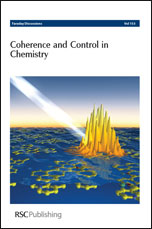From molecular control to quantum technology with the dynamic Stark effect
Abstract
The non-resonant dynamic Stark effect is a powerful and general way of manipulating ultrafast processes in atoms, molecules, and solids with exquisite precision. We discuss the physics behind this effect, and demonstrate its efficacy as a method of control in a variety of systems. These applications range from the control of molecular rotational dynamics to the manipulation of chemical reaction dynamics, and from the suppression of vacuum fluctuation effects in coherent preparation of matter, to the dynamic generation of bandwidth for storage of broadband quantum states of light.
- This article is part of the themed collection: Coherence and Control in Chemistry

 Please wait while we load your content...
Please wait while we load your content...